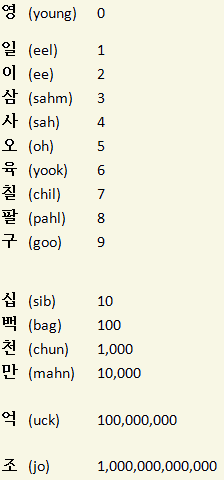When you’re at a restaurant in Seoul, not a fancy one, but any run-of-the-mill places for peasants like me, you will hear the words “sam-chon” or “i-mo” quite frequently.
Sam-chon literally means “uncle” and i-mo is “aunt,” specifically your mom’s sister. It’s a way that Koreans would try to get the wait staff’s attention by calling out to them—calling them by “waiter” is rude in any language, right? They’re terms of endearment, although it would obviously be weird to say “i-mo” to a female staff who is a lot younger than you. (a word of caution: there is some controversy surrounding this, so if you find yourself at a Korean restaurant, don’t use it yourself.)
We’ll focus on the word sam-chon for today.
The Korean word for uncle, and I mean a direct uncle, like the brother of your parent, is 삼촌 (sam-chon, 三寸). (The sisters of your parents have different names and not within the scope of this posting.) And the word for what the English word calls the “first cousin” is 사촌 (sa-chon, 四寸).
I’m going to make a wild guess that anyone who’s reading this has studied the Korean language at least a little bit, as I’m finding that assumption to be true the last few weeks.
So, most of you know how to count to ten in Korean, right?
1, 2, 3, 4, 5, 6, 7, 8, 9, 10.
일 (il), 이 (eeh), 삼 (sahm), 사 (sa), 오 (oh), 육 (yook), 칠 (chil), 팔 (pahl), 구 (goo), 십 (shib).
As you may have guessed by now, the sam and sa characters in the words sam-chon and sa-chon are the numbers 3 and 4. The suffix chon can mean a few different things, but mostly used as a counting unit, or in describing something small. But in reality, this particular word, or the character 寸 (촌, chon), isn’t used anywhere else, other than describing how closely you’re related to someone.
So, if someone should ask you, “what is your chon-soo (촌수, 寸數, chon number or factor) to that person?” You would simply calculate according to the following rules.
How to count your relative-ness in Korean is very easy.
From a parent to children, the chon factor is 1.
From sibling to sibling, the chon factor is 2 (because from myself to parent is 1, and from parent to their other child is 1. 1 + 1 = 2).
That’s it. Then, you just add the numbers and figure out what and how to call your relatives.
me <=> my dad = 1 chon
my dad <=> his 3 brothers = 2 chon
1 chon + 2 chon = my dad’s brothers are 3 chon to me.
my 3 chons <=> their kids = 1 chon
3 chon + 1 chon = my 3 chons’ kids are 4 chon to me.
my dad’s 4 chons <=> their kids = 5 chon
me <=> my dad’s 4 chons’ kids = 1 + 4 + 1 = 6 chon to me.
Take a look at this chart.
I think the Korean system is a lot easier to remember, what do you think? Anyone who’s over 8-chon isn’t really considered to be relative anymore.
I’ll add two more things to this discussion. There’s an idiom-like Korean expression that goes something like this.
… to the (whatever) party or gathering, all my sa-don (사돈, in-laws) and pahl-chon (8촌) showed up …
This means that even “the people that I’ve never met or not acquainted with (or more simply, people I have nothing to do with)” came to the party.
And the second thing I want add is, what do you think the chon factor is between husband and wife? It’s 0. Zero. This is meant to signify that husband/wife relationship is closer (or, should be closer) than even the parent and their children. I don’t know if you’ve heard of this word in the K-dramas or movies during scenes of husband/wife dialogue.
여보 (yeo-bo)
It’s a term (only) husband and wife use when they’re calling out to each other, instead of calling their names. Sort of like calling to your significant other, “sweetheart.”
여보 = 如寶
여, 如 = as same as, equal to
보, 寶 = precious, jewels, treasure
There are a lot of bullshit traditions (i.e. leaving all female names out of the family tree book jokbo), but sometimes, I’m pleasantly and unexpectedly impressed by how things have come about and evolved throughout my heritage.





